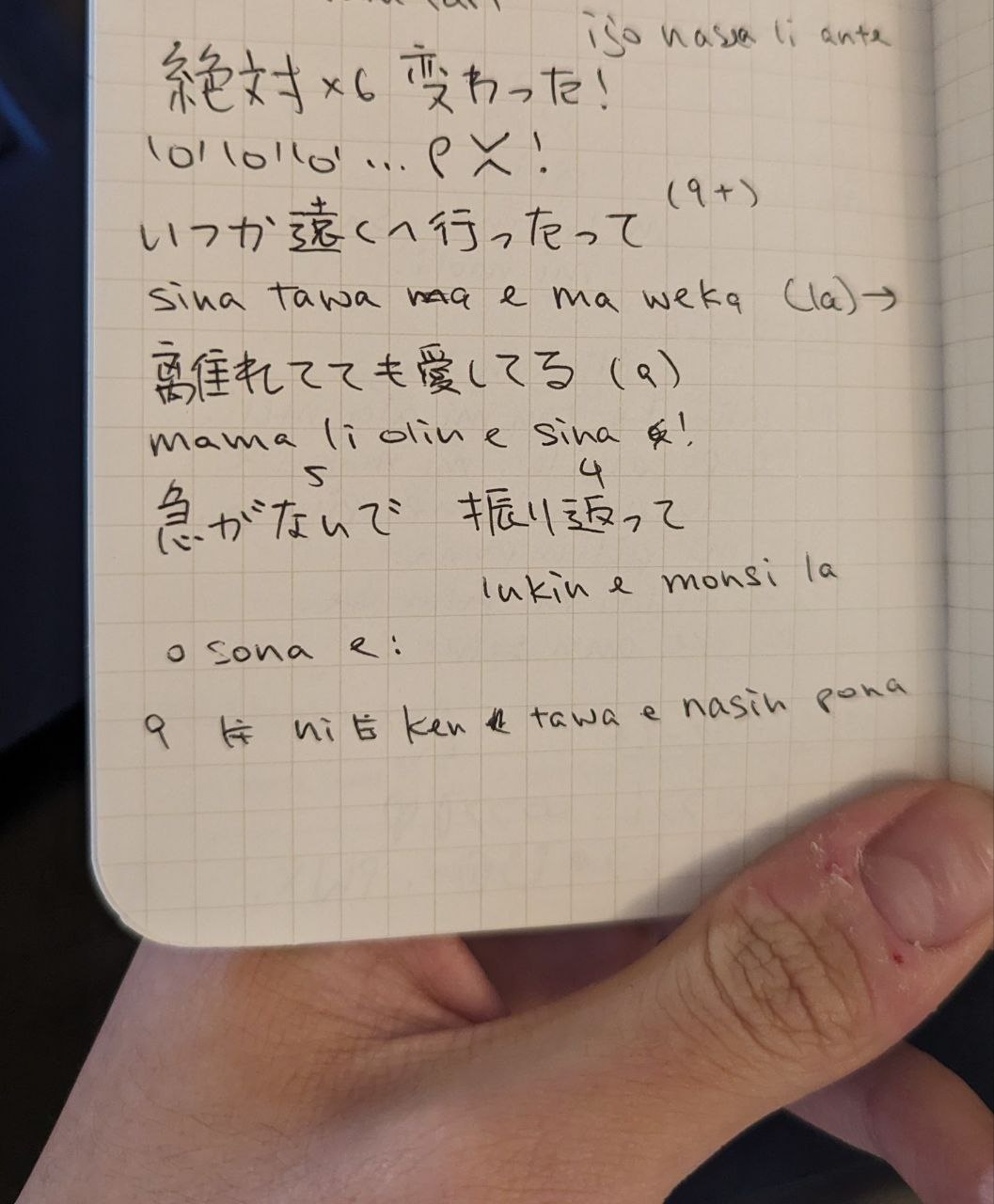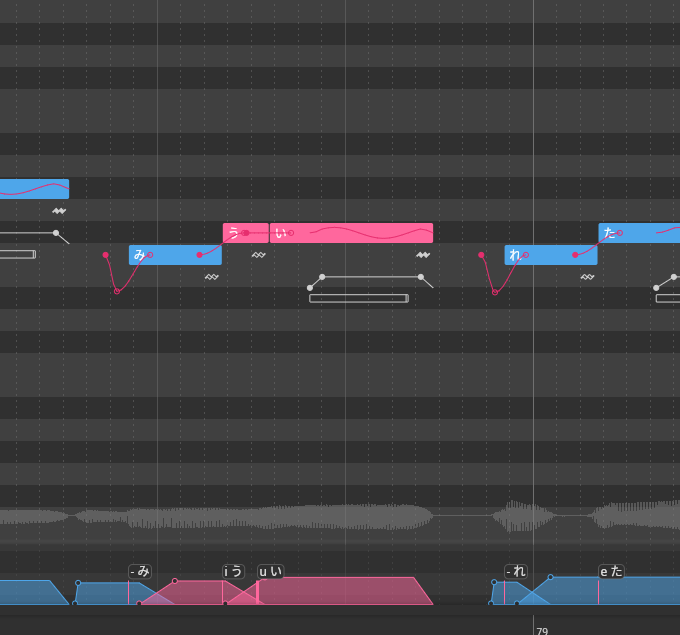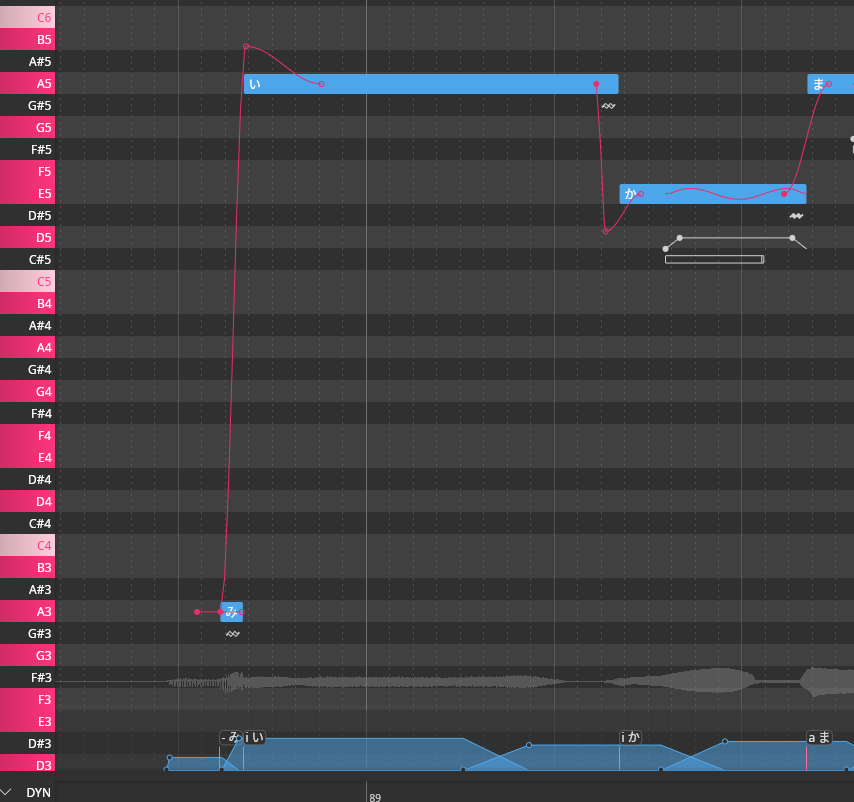Making nasin kama, nasin pini
March 14, 2024
As usual, a little bit of context: toki Pona is a philosophical artistic constructed language created by Sonja Lang known for its small vocabulary, simplicity, and ease of acquisition.
I have made songs with UTAU or Vocaloid tunings before, but this is my first time attempting to tune toki pona. Anyway, here’s the lyric video:
When I heard this song on Pokemon Day, I knew that I had to make something based off of it. It’s cute, it’s wholesome, and iyowa just pulled another classic iyowa again. There were 3 key changes in the first verse alone, and they didn’t even try to hold back the super-iconic chromatic descensions.
Translation

Real notes from the translating process
The translating process was quite a pain. First of all, my Japanese is pretty bad, especially on the grammar side. This meant that I didn’t even know what the original lyrics said super clearly to begin with, and I know how inaccurate machine translations of lyrics can be—even more inaccurate than my own translations! My toki pona was pretty bad as well at the time of translating this, and I had to refer to my one-page cheat-sheet constantly. This made the entire process extra painful, but from my perspective, I did find some pretty elegant solutions to some of the translation problems.
I knew that accuracy wasn’t my goal. I’ve seen quite a few toki pona translations of songs, and most of them completely deviate from the expressions of the original lyrics, instead opting for a more paraphrasing approach. I tried to preserve as much as possible, however, I don’t think the result is particularly pleasing. I wasn’t satisfied, but it was good enough.
Tuning
Using UTAU, I obviously couldn’t use 初音ミク again like in the original soundtrack. I knew that I was inexperienced, so I picked a very versatile and robust voicebank—重音テト—which would hopefully survive my uneducated manipulations. Its voice range was quite wide, which proved absolutely mandatory because of how ear-piercingly high this song’s vocal goes.

[β̞i]!
Japanese aligns with toki pona’s phonemes pretty well, with a few exceptions. Two I had to constantly deal with were [wi] and [si]. In Japanese, the two supposed equivalents were [β̞i] and [ɕi]. [ɕi] is way too far from the intended [si] sound, and [β̞i] doesn’t exist in most voicebanks (not even テト!) because the corresponding kana, ゐ, is historical and isn’t used anymore.
I had to make compromises. I joined the [ɯ] and [i] back to back to make something that sounds kind of like [wi]. In fact, the IPA symbols themselves look quite similar! [si] then was achieved by synthesizing a [sɨ], cutting off most of the vowel section, and playing [i] immediately. Admittedly, some places sounded wonky, but this is really the best I could do.

Whoa, look how high it can go!
As for the actual tuning, I had no vision in what I wanted, so I only did minimal amounts of pitch bending and vibrato editing. I didn’t think it was very good, but it’s definitely good enough for this project.
Visuals
If you are in the conlang community, you will definitely recognize this style from jan Misali. It’s quite a good format, and it saves so much time. It only took me some 3 hours to write all the comments and compile everything into a video. I didn’t typeset the pi phrases correctly, but it definitely looks neat thanks to the well-designed C059 and linja pona fonts.
So… It’s done!
I really, really wanted to get this done. I knew this wouldn’t earn any popularity, and it will only be something that I can show my friends in the toki pona community. However, it is a proof of concept, and it is super important for me that I know I know how to make something like this. If I wanted to make something good, I would probably get stuck on the translation, or the tuning, or the visuals. Every step could easily take at least 3 months.
I’m honestly really happy that I rolled this unpolished product out in the world: I’m a big believer of the “cult of done” manifesto. Although perfect is better than done, I certainly will not be able to manage “perfect”. I didn’t even know if I could manage “done”, but a 2-week-long project like this won’t eat up too much of my time anyways.
I will definitely roll out more unpolished projects like this in the future. They will be bad. All of them. However, I can learn something new from every attempt, and hopefully, eventually—eventually, they will be good. Or at least tolerable!